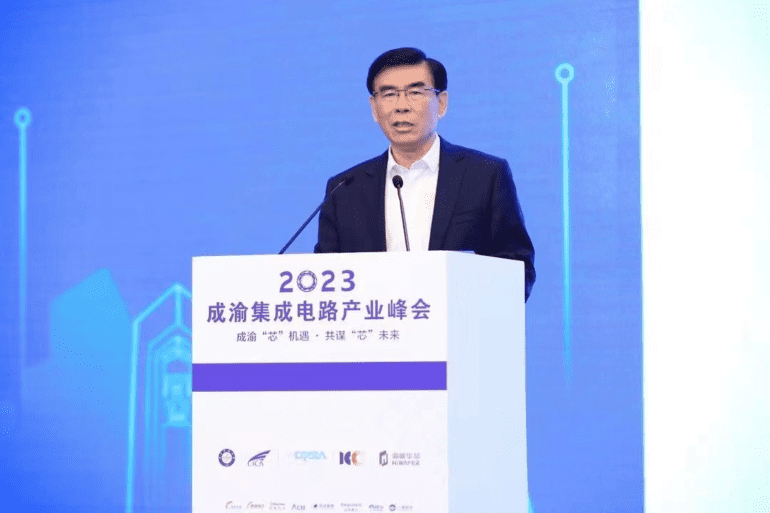TL;DR:
- Wei Shaojun, Tsinghua University professor, advocates application-centric AI technology.
- New chip architecture requires potent software and hardware programmability.
- Challenge: Efficient allocation and utilization of expanding computational power.
- Existing chip architectures evaluated: CPU/GPU, ASIC/SoC, FPGA/EPLD.
- Software’s centrality and chip’s foundation are highlighted.
- Dual challenges: Algorithm evolution and bespoke algorithms for applications.
- Solution proposed: Versatile deep learning processor, fluid data migration.
- Resource scarcity sparks China’s architectural drive.
Main AI News:
Amidst the feverish race among Chinese tech giants to secure Nvidia’s premier GPU chips, Wei Shaojun, an esteemed Tsinghua University professor and distinguished academician at the International Eurasian Academy of Sciences, delivered a pivotal keynote at Intel’s 2023 China Academic Summit. In this address, he underscored that the trajectory of AI technology must pivot toward an application-centric approach – where software delineates function, subsequently dictating chip design.
Wei Shaojun’s seminal proposal, lauded in China Electronic News, encapsulates the very essence of China’s semiconductor aspirations. The blueprint not only champions formidable software programmability but also champions robust hardware adaptability – a crucial dual-pronged strategy.
Expanding computational prowess and the surging appetite for such power has ushered in an epoch where AI’s trajectory hinges on more judiciously allocating, sharing, orchestrating, and harnessing computational resources. For China’s tech landscape, currently grappling with the ramifications of US-imposed restrictions on AI chip imports, this challenge looms larger. Wei astutely noted the confluence of motives advocating the consolidation of computational might within China’s borders, while also dissecting prevailing chip architectures utilized in AI applications.
- Central Processing Units (CPUs), Graphics Processing Units (GPUs), and their ilk, offer superlative software adaptability but evince hardware limitations.
- Application-Specific Integrated Circuits (ASICs) and System-on-Chips (SoCs), while efficient in specific tasks, lack malleability in software adaptability post-production.
- Field-Programmable Gate Arrays (FPGAs) and Erasable Programmable Logic Devices (EPLDs), exemplify versatile hardware adaptability, albeit at the cost of limited software flexibility and heightened expenditure.
Wei’s verdict resonates: the crux of AI lies in its software, and its bedrock is in its silicon. Within this juncture, Wei foregrounds two salient dilemmas. First, the unceasing evolution of algorithms ensures a perpetually evolving AI landscape. Second, the absence of a uniform algorithm mandates a bespoke algorithm for each distinct application.
In light of this, Wei posits a cogent solution: the imperative for an intelligent computational engine tailored for deep learning. One that transcends single-purpose chips, manifesting programmability across diverse applications and the capacity to fluidly shuttle data from the cloud to the edge. In Wei’s framework, these issues meet their resolution.
In the lens of resource scarcity, the conceptual crux of Wei’s innovation finds its origin in China’s predicament – a shortfall in acquiring AI chips. His proclamation reverberates, underlining China’s exigency to chart a new architectural course within present constraints.
Conclusion:
Wei Shaojun’s groundbreaking chip architecture proposal marks a paradigm shift in AI technology. His emphasis on software-guided chip design and the imperative for adaptable hardware aligns with the industry’s trajectory. By addressing the challenges of computational power allocation and algorithm evolution, his vision sets the stage for a more versatile and efficient AI landscape. China’s strategic pursuit of new architectures underscores the urgency to secure autonomy amidst resource constraints, ushering in a phase of innovation and self-reliance.

